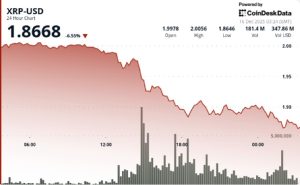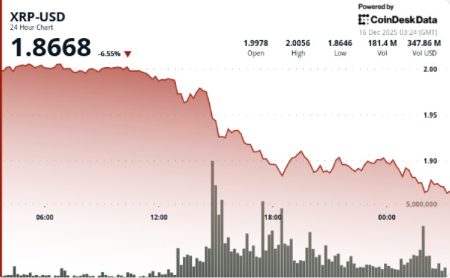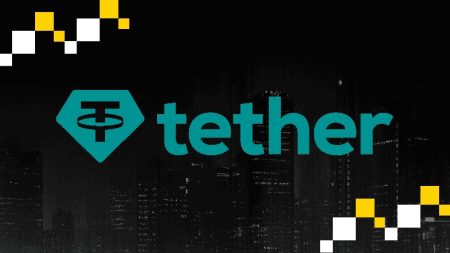JPMorgan Forecasts $34 Billion Potential Value for Coinbase Through Base Network Token
Banking Giant Sees Significant Upside in Crypto Exchange’s Layer-2 Solution
In a striking assessment of cryptocurrency market dynamics, U.S. investment banking powerhouse JPMorgan has projected that Coinbase could generate up to $34 billion in additional value through the potential introduction of a native token for its Base network. This forecast represents a significant vote of confidence from a traditional financial institution in the expanding ecosystem of blockchain solutions and their capacity to create substantial economic value.
The comprehensive analysis, detailed in a recently published report by JPMorgan’s research division, suggests that a Base token could establish a robust new revenue stream for Coinbase, America’s largest regulated cryptocurrency exchange. According to the bank’s analysts, Coinbase would likely pursue a strategic approach that combines on-chain trading mechanisms with returns from USD Coin (USDC), the stablecoin co-founded by the exchange. This dual strategy could potentially maximize the token’s utility and value proposition within the broader digital asset landscape, creating multiple avenues for revenue generation and ecosystem growth.
Base Network’s Impressive Growth Trajectory Since Launch
JPMorgan’s bullish outlook is substantially informed by the remarkable performance metrics of the Base network since its inception. Launched in August 2023 as a layer-2 scaling solution built on the Ethereum blockchain, Base has demonstrated extraordinary traction in its first year of operation. The network has accumulated over $5 billion in Total Value Locked (TVL) – a key metric that reflects the aggregate value of assets committed to the protocol – and consistently processes more than 9 million transactions daily. These performance indicators reflect strong market adoption and user engagement, placing Base among the fastest-growing layer-2 solutions in the blockchain space.
The bank’s analysis emphasized that a native token for the Base network could effectively “translate the network’s success into equity” for Coinbase. This represents a potential paradigm shift in how traditional financial institutions evaluate blockchain networks, acknowledging that network activity and adoption can be monetized through tokenization strategies. Based on current network utilization patterns and what the report describes as “high token economics,” JPMorgan estimates that Coinbase could realize a long-term market value addition ranging from $12 billion to $34 billion through this initiative. Furthermore, the analysis suggests that Coinbase would likely maintain approximately 40% of the token supply, which would translate to an equity value increase between $4 billion and $12 billion for the exchange.
Coinbase Leadership Signals Growing Interest in Token Launch
The possibility of a Base network token has gained increasing attention not merely from external analysts but from Coinbase’s own leadership team. During the recent BaseCamp conference held in Vermont, Jesse Pollak, the principal architect and leader of the Base project, openly acknowledged that issuing a native token could significantly accelerate the network’s decentralization roadmap while simultaneously creating expanded opportunities for developers building on the platform. This approach aligns with broader industry trends toward progressive decentralization, where protocols initially launch with centralized oversight but gradually transition governance and operational control to their communities.
Adding further credibility to these considerations, Coinbase CEO Brian Armstrong addressed the token speculation directly in a statement on X (formerly Twitter), confirming that the concept was currently “in the exploratory phase.” However, Armstrong was careful to temper expectations, emphasizing that “there are no definitive plans yet” regarding token issuance. This measured communication strategy suggests that while Coinbase is seriously evaluating the potential benefits of a Base token, the company is proceeding with characteristic caution to ensure regulatory compliance and optimal implementation. Armstrong’s leadership has consistently prioritized a methodical approach to new initiatives, particularly those with potential regulatory implications in the evolving cryptocurrency landscape.
Strategic Implications for Coinbase’s Market Position
The potential introduction of a Base token represents a strategic inflection point for Coinbase as it seeks to diversify revenue streams beyond its traditional exchange business. As cryptocurrency markets have matured, exchanges face increasing competition and margin pressure on basic trading services. By developing a layer-2 ecosystem with its own native token, Coinbase could establish a vertically integrated blockchain infrastructure that generates value through transaction fees, staking rewards, and token appreciation. This diversification strategy would strengthen Coinbase’s resilience against cryptocurrency market volatility while positioning the company as an infrastructure provider rather than merely an exchange operator.
JPMorgan’s valuation projection signals growing institutional recognition of the economic potential within blockchain infrastructure development. For Coinbase, which has weathered significant regulatory scrutiny and market fluctuations since its 2021 public listing, the Base network represents a strategic pivot toward infrastructure development that could reshape its business model and market perception. While the company has not committed to a definitive timeline for a potential token launch, the financial implications outlined in JPMorgan’s analysis suggest that such a move could substantially enhance shareholder value while advancing the company’s technological objectives. As with all cryptocurrency developments, regulatory considerations will likely influence both the timing and structure of any token offering, with Coinbase’s established relationship with regulators potentially providing a framework for compliant implementation that could set precedents for the broader industry.
Note: This article is intended for informational purposes only and does not constitute investment advice. Readers should conduct their own research and consult financial professionals before making investment decisions related to cryptocurrency or blockchain technologies.















